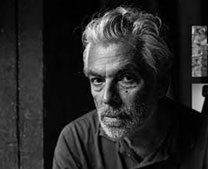


Ingmar Bergman: Sommernattens smil
Per Arnoldi har et aktivt og selekteret forhold til filmhistorien: Det fandt jeg ud af her i juledagene, hvor han i Politikens serie om kunstneres forhold til andres værker, hvilket har betydet mest? Og Arnoldi overraskede mig ved at røbe at han ser “Sommernattens smil” flere gange om året.
Jeg forstår ham så godt. Har foræret mig selv en lille stak Bergman DVD-er. Og har ladet dagene præge af det. Og den film er da frydefuld. Jeg grinede højt igen (efter disse mange år, hvor jeg i modsætning til Arnoldi ikke har set den). Filmen er for mig så skørt det lyder fuldstændig ny og frisk og meget bedre end nogen vedtaget nutidig komedie, jeg kan komme i tanker om.
Men kritikerne og kommentatorerne har gennem filmens levetid bestemt ikke været enige om det:
“… personerne er talerør for et aforistisk visdomsmageri, som giver sig ud for at være let og letsindigt, vittigt, dristigt, frækt og klogt, men i virkeligheden er tungt og klægt og uvittigt i al sin fingerpegende tydelighed.” (Werner Pedersen i Kosmorama, 20, 1956)
“”Sommernattens smil” er en ægte komedie, hvor surt og sødt blandes, hvor kærligheden betragtes med kynisme, men samtidig anerkendes som en alle besejrende magt.” (Svend Kragh- Jacobsen i Berlingske Tidende 13. september 1956)
“… så man altid går til hans film med en forventning om, at man skal til at opleve noget, der i eminent forstand er spændende. Det ville være synd at sige, at han skuffer os. Hvad han her har præsteret er et stykke stilkomedie af rang og placerer ham som filmens og Sveriges ækvivalent til Karen Blixen..” (Erik Ulrichsen i Information 13. september 1956)
“Det er en komedie af en kunstner, der af en eller mange grunde ikke kan lave komedier. Det har Ingmar Bergman vel også selv indset, eftersom han ikke har lavet komedier siden. Det er verden ikke blevet fattigere af…” (Ib Monty i Kosmorama, 137, 1978)
“… Lad filmen være blændværk på blændværk påblændværk, et artisteri uden mage i sin moderne leg med hele romantikkens klunkeverden, legen vil fortrylle både det store og det lille publikum ved spillets intensitet og situationernes dristighed. Sådan kan det gøres, når man kan.” (Harald Engberg i Politiken 13. september 1956)
“Der er en afslørende målestok, man kan anlægge over for så generøse kunstværker som denne helt helstøbte film. Hvornår rammer den? Hvornår bevæges man rigtigt og dybt? Hver gang.” (Per Arnoldi i Politiken 26. december 2007)
Og altså for Arnoldis vedkommende flere gange om året.. Man kunne jo prøve disse Bergmanværker af de mange fridage, som slutter dette år, hvor vi måtte tage afsked med mesteren.
*
“På ét niveau findes alle disse filminstruktører, som år efter år forsyner publikum med god og pålidelig underholdning. På næste niveau findes kunstnere, som gør filmene dybere, er personligere, mere originale og mere spændende. Og til sidst, oven over dem alle, findes Ingmar Bergman, som formodentlig er den største filmkunstner siden opfindelsen af filmkameraet.” (Woody Allen i Chaplin 2/3 1988)
Ingmar Bergman: Sommernattens smil, 1955. Bergmans film kan købes mange steder. Jeg fik mine i Classico, Nørregade 53, København peter.olufsen@ejby.mail.telia.com

